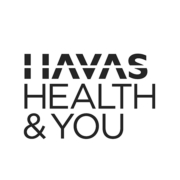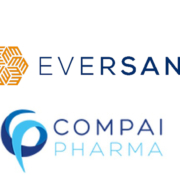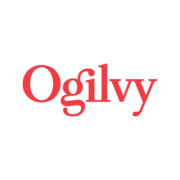Pitch perfect: RFP responses that don’t fall flat
Pitch perfect: RFP responses that don’t fall flat
By Molly Brown, Omnicom Health Group, and Megan Hall, Entrée Health
Biopharmaceutical manufacturers commercializing products in the United States rely on marketing and communications agency partners to inform the marketplace — patients, prescribers, payers, and everyone else who makes decisions about health care — on their product’s benefits and value. The agency partners they choose to work with can make or break a product’s success, but selecting the right collaborator isn’t always easy.
The manufacturer-agency relationship, at its best, is a long-term partnership that involves two-way communication, real-time feedback about both the work and the people, and deep understanding of both parties’ business needs. That’s hard to tease out in a one-hour conversation, let alone from a purely written response. But whether you love or hate the Request for Proposal (RFP)/ “pitch” process, it’s still the industry standard for getting to know potential agency partners.
Over many years and hundreds of RFPs, we’ve learned a few things about how manufacturers can get the best from agencies during this process – and choose a partner that will hit the mark for a long time to come. The following are a few Dos and Don’ts that will help marketers and procurement professionals prepare RFPs that will inspire agencies and your internal teams during the process. We’ve also included a few real-world examples of RFP questions (with identifying details changed to protect the innocent) to show how subtle adjustments can help make the “perfect pitch” the next time you need to issue an RFP.
Dos and Don’ts for manufacturers seeking the best pitches from potential agency partners
- Do: Provide as much information, as clearly and in as much detail, as you can in the RFP document(s). Agencies keep the information you provide in strict confidence. But by providing market research, strategic plans, and budgets at the outset, you will get responses from agencies that know they’re a good fit and ideas that align with the thinking you’ve already done.
- Don’t: Choose your partner based on their ability to read your mind. You’ve spent months coming to the strategy you’re working from. The agency has, at best, spent a few weeks thinking about it. And they’re likely to have opinions that differ from yours, based both on the assumptions they’ve made and the experience they bring to the table. Make your choices by considering the input you’ve given, the thinking the agency did with that input, and their ability to make market-moving work from the strategy they lay out in their response. If you choose to work together, you’ll come to a shared perspective on strategy before the agency does the work.
- Do: Foster connections before the presentation. Open communication, right from the beginning of the process, creates a better understanding of each party’s needs and goals. 1:1 calls to pressure-test thinking and approaches with decision-makers provides agencies to show up with thinking that meets (and exceeds) your expectations.
- Don’t: Fall into a lingo trap. Avoid over-used terms and generic phrases like “proactive strategic thought-partner.” Instead, use specific language to describe what you expect, such as:
- Creative executions that reveal deep category understanding
- In-house payer insights from individuals with real-world experience
- Project management and submissions excellence
- Strategic brand planning experience
- Day-to-day leads that are completely dedicated to my business
- Do: Come with an open mind. If you’re seeking strategic guidance, come prepared to listen to ideas that may be different than your team’s pre-conceived notions, and be sure to allow room for diversity of thinking and inclusive ideas. If you already have a strategy outlined, don’t ask participating agencies to complete a strategic exercise; instead, ask them to build upon your defined strategy. Agencies will appreciate both the transparency and unwillingness to make them jump through unnecessary hoops.
- Do: Think through logistics. Outline proposal requirements, timelines, and expected decision times. Communicate when things change – agencies know this isn’t your top priority and will flex with you. Don’t forget to share the decision, even if it’s not great news.
- Don’t: Ask general questions. In a 10-page response or 90-minute meeting, agencies can either provide a high-level response that attempts to “boil the ocean,” or they can provide a tailored, insightful response to the specific issues you’re facing. Asking for a response to a carefully crafted challenge statement will help your potential partners respond in ways that wow. (See a few examples below.)
- Do: Consider a work trial instead of an RFP. The pitch process is time-consuming and expensive for both parties, and the work produced almost never sees the light of day. What if, instead, you could get real work that will help your business move forward while also seeing what it’s really like to work together? Find a self-contained project, explain your expectations clearly, and have an honest conversation at the end about what worked and what didn’t. Manufacturers should expect to pay for this work, but agencies should also consider offering this test project at a discount. So as a final thought, ask yourself, do I really need an RFP?
A look inside
Manufacturers who follow the dos and don’ts listed above and provide RFP participants with strategic, thoughtful questions are more likely to receive a pitch that meets their needs and has internal stakeholders yelling, “Yes! More!” Figure 1 explains real-world examples of RFP questions and information that fell short of inspiring perfect pitches and their revisions that manufacturers can use instead.
 |
Molly Brown, VP, associate director of business development, Omnicom Health Group, brings a continuous sense of curiosity to her role as a business development lead for the Entrée Health network. She is dedicated to solving complex reimbursement challenges to improve patient access while expanding her knowledge and expertise. Brown drives new business initiatives with a laser focus on providing potential clients with effective solutions that will have a tangible impact on patients, physicians, and all access stakeholders. |
| Megan Hall, chief marketing and creative officer, Entrée Health, has spent the majority of her career in the access and reimbursement space, writing communications that help payers, physicians, and patients understand the value of the brands with which she’s entrusted. A former scientist and a forever science geek, today Hall co-leads the Entrée Health organization. |













